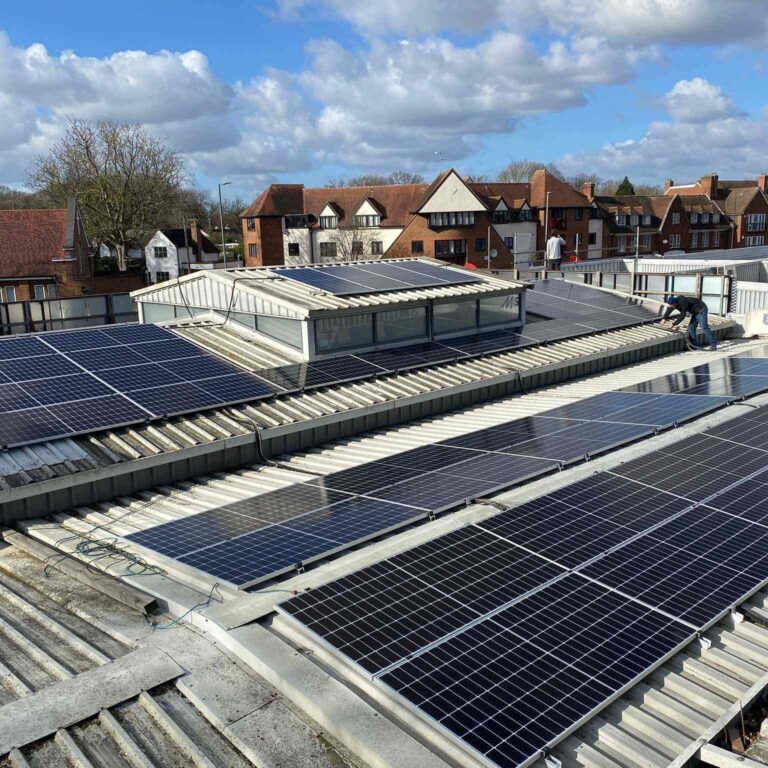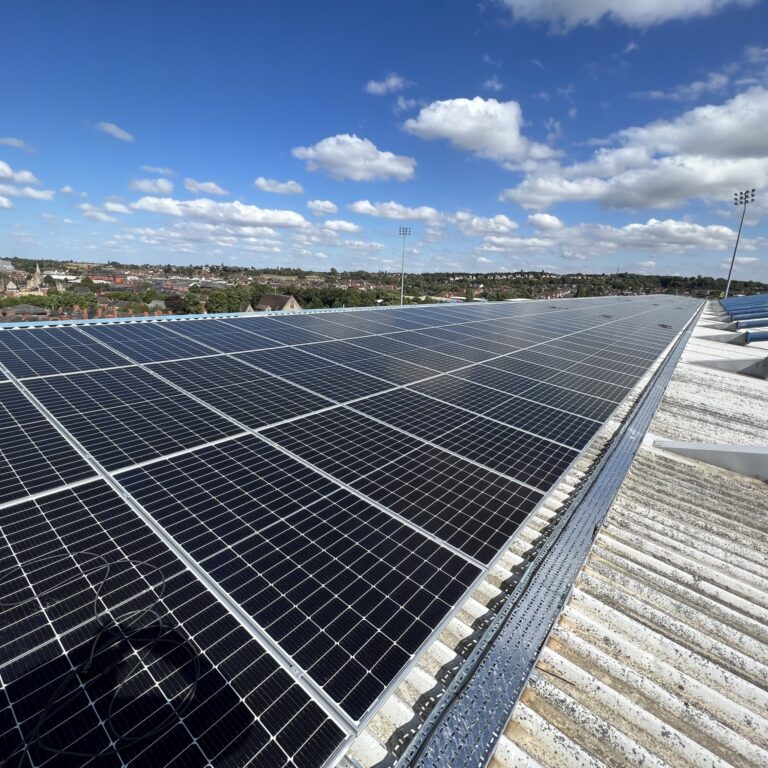In the ever-evolving landscape of energy management, UK businesses are increasingly seeking innovative ways to reduce operational costs and improve energy efficiency. One such strategy gaining traction is grid peak shaving. This method not only helps businesses cut down on electricity costs but also plays a crucial role in enhancing overall energy efficiency. In this article, we will delve into the concept of grid peak shaving, explore how it benefits UK companies, and offer insights on how to implement this strategy effectively.
What is Grid Peak Shaving?
Grid peak shaving is a technique used by businesses to reduce their energy consumption during periods of peak demand. In simple terms, it involves lowering the amount of electricity drawn from the grid during high-demand times, typically when energy prices are at their highest. This is achieved by using alternative energy sources, such as battery storage systems, or by temporarily reducing or shifting non-essential energy usage to off-peak periods.
The primary goal of grid peak shaving is to minimize the financial impact of high electricity tariffs associated with peak demand times. By effectively managing energy usage, businesses can avoid peak charges and benefit from lower energy bills. In addition, grid peak shaving can contribute to greater energy resilience and sustainability, making it an attractive option for UK companies looking to optimize their energy strategy.
Why Grid Peak Shaving Matters for UK Businesses
In the UK, energy costs are a significant concern for businesses across all sectors. With fluctuating energy prices and the ongoing push for sustainability, companies are under pressure to find ways to manage their energy consumption more efficiently. Grid peak shaving offers a practical solution to this challenge, providing several key benefits for UK businesses:
1. Cost Savings
One of the most immediate benefits of grid peak shaving is the potential for significant cost savings. During periods of peak demand, electricity prices can spike, leading to higher energy bills. By reducing energy consumption during these times, businesses can avoid these high charges and lower their overall energy costs. This is particularly relevant for large industrial and commercial facilities where energy usage is substantial.
2. Improved Energy Efficiency
Grid peak shaving is also a valuable tool for improving energy efficiency. By carefully monitoring and managing energy usage, businesses can identify opportunities to reduce waste and optimize their operations. This not only helps in lowering energy bills but also contributes to a more sustainable and environmentally friendly business model.
3. Enhanced Energy Resilience
In addition to cost savings and efficiency, grid peak shaving can enhance a business’s energy resilience. By relying less on the grid during peak times and using alternative energy sources like battery storage, companies can reduce their vulnerability to grid instability and power outages. This is especially important for businesses that operate critical infrastructure or cannot afford downtime.
4. Sustainability and Corporate Responsibility
As sustainability becomes an increasingly important consideration for businesses, grid peak shaving offers a way to reduce a company’s carbon footprint. By minimizing reliance on fossil fuels and reducing overall energy consumption, businesses can make a positive impact on the environment. This can also enhance a company’s reputation and align with corporate social responsibility (CSR) goals.
How to Implement Grid Peak Shaving in Your Business
While the benefits of grid peak shaving are clear, successful implementation requires careful planning and the right technology. Here are some steps UK businesses can take to integrate grid peak shaving into their energy management strategy:
1. Conduct an Energy Audit
The first step in implementing grid peak shaving is to conduct a comprehensive energy audit. This involves analyzing your business’s energy consumption patterns to identify peak demand periods and determine where energy savings can be achieved. An energy audit will also help you understand the specific factors driving your energy usage, such as equipment, lighting, and HVAC systems.
2. Invest in Battery Storage
Battery storage systems are a key component of grid peak shaving strategies. These systems allow businesses to store energy during off-peak times when electricity prices are lower and then use that stored energy during peak demand periods. By investing in a high-quality battery storage system, UK businesses can effectively reduce their reliance on the grid and lower their energy costs.
3. Optimize Energy Use
In addition to battery storage, grid peak shaving can be achieved by optimizing energy use across your business. This may involve shifting non-essential energy usage to off-peak periods, upgrading to energy-efficient equipment, and implementing smart energy management systems. Automation and control technologies can also play a role in dynamically adjusting energy consumption based on real-time demand.
4. Partner with an Energy Management Expert
For businesses new to grid peak shaving, partnering with an experienced energy management expert can be invaluable. These professionals can provide guidance on the most effective strategies for your specific business needs, help with the installation of battery storage systems, and offer ongoing support to ensure optimal performance. They can also assist with navigating regulatory requirements and accessing potential incentives for energy efficiency improvements.
5. Monitor and Adjust
Finally, it’s important to continuously monitor your grid peak shaving efforts and make adjustments as needed. Energy consumption patterns can change over time, so regular monitoring will help ensure that your strategy remains effective. Businesses should also stay informed about changes in energy pricing and regulations that could impact their grid peak shaving efforts.
Real-World Examples of Grid Peak Shaving in the UK
Several UK businesses have successfully implemented grid peak shaving strategies to reduce their energy costs and improve efficiency. For example, manufacturing facilities with high energy demands have utilized battery storage systems to store energy during low-cost periods and use it during peak demand times, resulting in significant cost savings. Similarly, large office buildings have adopted smart energy management systems to reduce energy usage during peak periods, contributing to both cost savings and sustainability goals.
The Future of Grid Peak Shaving in the UK
As energy costs continue to rise and the push for sustainability intensifies, grid peak shaving is likely to become an even more critical component of energy management strategies for UK businesses. Advances in battery storage technology, coupled with the increasing availability of smart energy management systems, will make grid peak shaving more accessible and effective for companies of all sizes.
Furthermore, government policies aimed at reducing carbon emissions and promoting renewable energy are expected to support the adoption of grid peak shaving strategies. Businesses that proactively implement grid peak shaving will not only benefit from lower energy costs but also position themselves as leaders in sustainability.
Conclusion
Grid peak shaving is a smart and effective strategy for UK businesses looking to reduce energy costs, improve efficiency, and enhance energy resilience. By carefully managing energy consumption during peak demand periods, companies can avoid high electricity charges and optimize their overall energy use. With the right technology, such as battery storage systems, and a strategic approach, grid peak shaving can deliver significant financial and environmental benefits.
For UK businesses seeking to stay competitive and sustainable in today’s energy landscape, grid peak shaving is a strategy worth considering. Whether you’re a large industrial facility or a smaller commercial operation, the potential benefits of grid peak shaving are substantial, making it an essential part of any comprehensive energy management plan.



